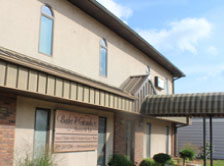On June 26, 2015, the U.S. Supreme Court handed down its decision in Obergefell v Hodges. From that day forward, every state would be required to license a marriage between two people of the same sex and to recognize a marriage between two people of the same sex when their marriage was lawfully licensed and performed out-of-state.
While a victory for same-sex marriage advocates, the decision left many questions unanswered. Either state legislatures would sort things out, or the court would address each issue, one-by-one, in the coming years. If the court agrees to hear arguments in V.L. v E.L. during the current session, one question may be settled — and others may be raised.
What happened: The case involves a same-sex couple and their three children. According to court documents, the two women had been together for about seven years when they decided to have children. One woman, E.L., gave birth to first one child, in 2002, and then twins in 2004. In 2007, the couple decided to formalize the relationship between the children and V.L.
While the family lived in Alabama, the adoptions took place in Georgia. Again according to court documents, the couple had looked for a jurisdiction that would be friendly to same-sex adoption. V.L. established residency, and the process moved forward.
The hitch: In 2007, the fight for same-sex marriage still had a long way to go. According to the Boston Globe’s timeline, 26 states still had constitutional bans against it, and only one state was actually performing marriages.
The fact that their relationship had no legal status in either Georgia or Alabama posed a problem for E.L. and V.L. The laws for step-parent adoptions did not apply. Nor, for that matter, did any of “regular” adoption laws.
We’ll continue this in our next post.
Sources:
Newsroom America, “U. of I. News: Gay adoption: A Minute With… U. of I. expert Sara R. Benson,” Jan. 5, 2016
SCOTUS Blog, “Opening a new phase of law for gays?” Lyle Denniston, Nov. 17, 2015


